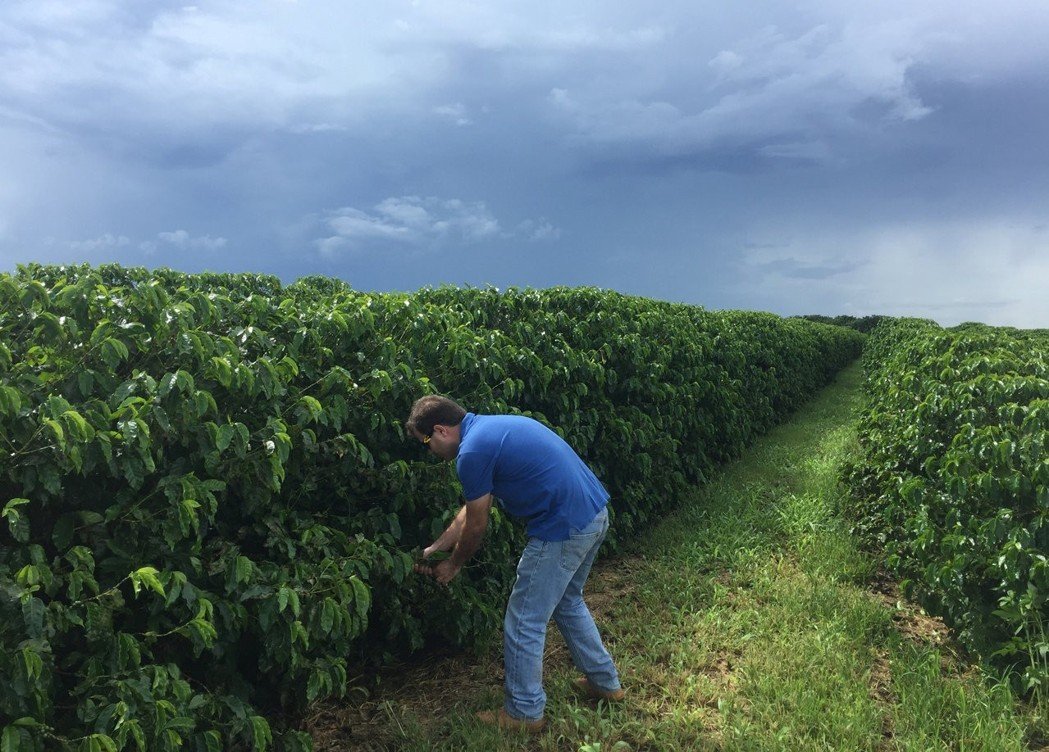Brazil has a bumper harvest of coffee beans, but suffering from coffee farmers in other producing areas?

Professional coffee knowledge exchange More coffee bean information Please pay attention to coffee workshop (Weixin Official Accounts cafe_style)
Brazil's coffee bean production hit a new high in the second half of 2018, becoming a major negative source of oversupply in the global coffee bean market, resulting in coffee bean futures prices still unable to shake off the 12-year low.
According to the Brazilian State Commodity Supply Agency (Conab), Brazil produced 62 million bags of coffee beans (60 kg each) in 2018, setting an all-time high. Conab expects production to slip to 53 million bags in 2019, but that also marks the high point of a "low yield year."
The so-called low-yield year represents the year after Brazil's coffee bean harvest. Since the country's coffee tree production has always been a two-year cycle, in the high-yield year, that is, the low-yield year. According to Comexim, Brazil's coffee bean production in 2019 is estimated to be about 58.2 million bags.

However, Brazil's bumper harvest in 2018 also means that coffee farmers around the world will continue to face low prices, and even farmers in many regions will not be able to make profits at all.
Brazil's influence on global coffee prices has been described as similar to Saudi Arabia's influence on oil prices. Brazil accounts for a third of global coffee bean production and a quarter of overseas export markets.
Coffee bean prices in New York have rebounded from recent lows, but remain below $1.10 a pound, below the $1.20-$1.50 level at which coffee farmers in Latin American countries can make a profit.
Global coffee prices plummeted to nearly 13-year lows last year, prompting coffee farmers in Guatemala to abandon coffee plantations and farmers in Colombia to plant coca bush, which produces cocaine. Kamu, director of the Africa Fine Coffee Association, also said some Kenyan farmers had switched from coffee beans to more profitable crops.
A weaker dollar may ease downward pressure on prices. Since coffee beans are traded in US dollars, a significant depreciation of the US dollar against the Brazilian lire would reduce Brazilian businessmen's willingness to export and help reduce coffee bean exports. For now, however, the Brazilian lire remains 45% below its 20-year average against the dollar.
Important Notice :
前街咖啡 FrontStreet Coffee has moved to new addredd:
FrontStreet Coffee Address: 315,Donghua East Road,GuangZhou
Tel:020 38364473
- Prev

Starbucks CEO Johnson: User experience is unique in the industry, Ruixing Coffee can't surpass
Professional coffee knowledge exchange More coffee bean information Please pay attention to coffee workshop (Weixin Official Accounts cafe_style) In 2018, Ruixing Coffee has expanded rapidly in China with huge capital. Last year, it opened more than 2000 branches, and plans to open another 2500 this year. Starbucks, known as the No.1 coffee market in China, has encountered strong rivals in anyone's eyes. However,
- Next

The champions of the World Coffee draw Competition share the benefit method!
Professional coffee knowledge exchange more coffee bean information please follow the coffee workshop (Wechat official account cafe_style) the South Korean drama "Coffee Prince No.1 Shop" makes the rich son's entrepreneurial dream romantic and passionate, which is just a fictional story. on the contrary, we have many "coffee princes" in Hong Kong. For example, A Kim Yang Yaohui, who won the world flower draw competition in New York last year, relies solely on.
Related
- What effect does Italian American coffee with filter paper have? Will coffee taste better if it is put on filter paper at the bottom of the powder bowl?
- What is the color difference in coffee beans? What are the characteristics of honey processed coffee beans? Why are the anaerobically treated coffee beans uneven in color?
- How does novice Xiaobai quickly get started and make coffee? Newbies learn to make coffee by hand and share the specific steps and process process!
- Costa tea has a shelf life of 100 years?! Expert: Unable to verify
- It's a huge uproar! American milk addition was rejected by Manner employees?!
- Mocha pot coffee bean recommendations| How fine and how much powder should be used for grinding? What parameter ratios do I need to use to make milk with Mocha pot coffee?
- What are the characteristics of the world's top ten coffee beans treated with Costa Rica honey? How to make black honey kadura from Tarazhu Pilon Processing Plant taste good?
- How to make deep-roasted coffee? What grinding water temperature does authentic Jamaica Blue Mountain No. 1 coffee use to brew it well?
- Selected high-grade rose summer coffee flavor tasting guide Why Panama rose summer has the aroma of flowers and fruits
- What equipment does a novice Xiaobai need to buy to learn to make coffee? Filter cup electronic scale bean grinder manual flushing pot purchase guide

